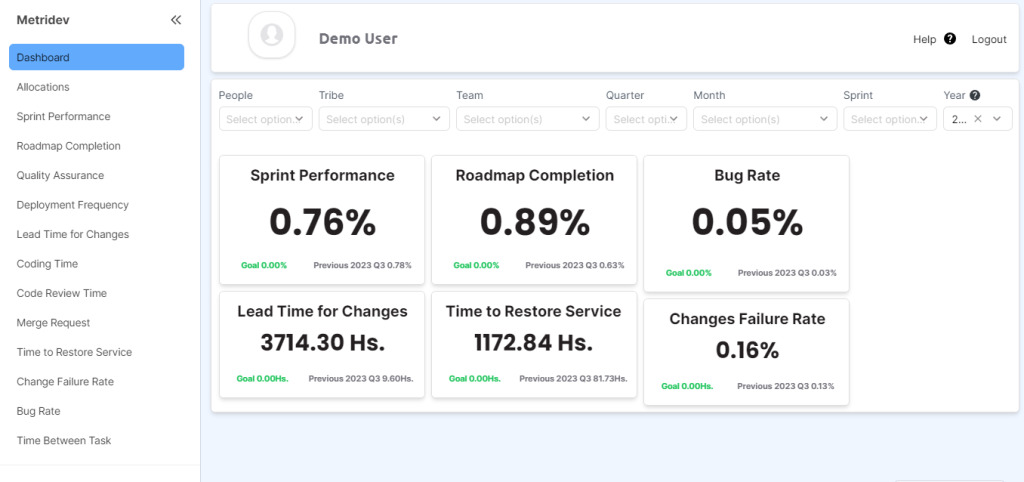Introduction: Importance of Team Productivity
In today’s fast-paced and competitive business landscape, team productivity plays a crucial role in achieving organizational success. The ability of a team to work together efficiently and effectively can significantly impact overall performance and outcomes. Productivity is not just about individual contributions; it is about harnessing the collective power of collaboration to achieve shared goals. This article will delve into various aspects of team productivity, including understanding team productivity metrics, the importance of groups building productivity, strategies to improve team productivity, and the role of communication in enhancing productivity.
Understanding Team Productivity Metrics
Team productivity metrics are essential in assessing and monitoring the performance of a group. These metrics provide quantifiable insights into how well a team is functioning, enabling leaders to identify areas of improvement and make data-driven decisions. Some common team productivity metrics include the number of tasks completed within a specific timeframe, the ratio of completed tasks to the total assigned, and the average time taken to complete tasks. By analyzing these metrics, organizations can gain a deeper understanding of their teams’ productivity levels and identify opportunities for growth.
What is Team Building Productivity?
Team building productivity refers to the collective ability of a team to work together cohesively and efficiently towards achieving a common goal. It involves fostering a positive team culture, building strong relationships among team members, and establishing clear roles and responsibilities. When team building is prioritized, individuals become more motivated and committed to their work, resulting in higher levels of productivity. By investing in group building activities, such as retreats and collaborative projects, organizations can create a supportive and collaborative environment that enhances productivity.
The Importance of Team Health in Enhancing Productivity
Team health plays a pivotal role in enhancing productivity. A healthy team is one that maintains open communication and fosters trust among its members. When team members feel supported, motivated, and respected, they are more likely to contribute their best work and go the extra mile. Additionally, a healthy team is better equipped to handle challenges and conflicts, as they have established effective communication channels and problem-solving mechanisms. Organizations should prioritize team health by promoting a positive work culture, encouraging work-life balance, and providing opportunities for professional growth and development.
Strategies to Improve Team Productivity
Improving team productivity requires a holistic approach that considers various factors impacting team dynamics. Here are some strategies:
1. Set Clear Goals and Expectations: Clearly define team goals and individual expectations to align everyone’s efforts towards a common purpose. This clarity helps team members stay focused and motivated.
2. Promote Effective Communication: Establish open lines of communication within the team, ensuring that everyone feels comfortable sharing ideas, concerns, and feedback. Regular team meetings, virtual collaboration tools, and clear communication channels can facilitate effective communication.
3. Leverage Each Team Member’s Strengths: Identify the unique strengths and skills of each team member and delegate tasks accordingly. By capitalizing on individual strengths, teams can optimize performance and achieve better outcomes.
4. Encourage Collaboration and Knowledge Sharing: Foster a culture of collaboration where team members actively engage in sharing ideas, insights, and best practices. Collaboration platforms, project management tools, and cross-functional projects can facilitate effective knowledge sharing.
5. Provide Adequate Resources and Support: Ensure that the team has access to the necessary resources, tools, and training required to perform their tasks effectively. Adequate support from leaders and managers is crucial in removing obstacles and empowering the team.

The Role of Communication in Team Productivity
Effective communication is the lifeblood of productive teams. It enables seamless collaboration, clarity of purpose, and efficient problem-solving. By communicating openly and transparently, team members can align their efforts, share information, and resolve conflicts promptly. Communication also plays a vital role in setting expectations, providing feedback, and recognizing individual and team achievements. Organizations should foster a culture that values and prioritizes communication, leveraging various communication channels such as meetings, emails, instant messaging, and project management tools to ensure effective information flow.
How to Measure Development Team Productivity
Measuring development team productivity is crucial to assess their performance and identify areas for improvement. Some key metrics to measure include:
1. Code Quality: Assess the quality of code produced by the development team, considering factors such as readability, maintainability, and adherence to coding standards.
2. Defect Density: Track the number of defects or bugs identified in the software developed by the team. A lower defect density indicates higher quality work and improved productivity.
How Do You Maximize Team Productivity?
To maximize team productivity, it is essential to adopt a comprehensive approach that addresses individual and team-level factors. Creating a positive work environment is a crucial step in fostering a sense of value, respect, and motivation among team members. By recognizing and rewarding achievements, morale can be boosted, maintaining high levels of motivation throughout the team.
Another key strategy is to empower the team by providing autonomy and decision-making authority within their roles. Empowered teams tend to be more engaged, motivated, and proactive in driving results, contributing to overall productivity.
Encouraging continuous learning is also vital for the professional growth and development of team members. Providing opportunities for training, skill-building workshops, and certifications enhances individual capabilities, positively impacting overall team performance.
In addition, streamlining processes and removing obstacles is essential for identifying and addressing inefficiencies that hinder productivity. Encouraging open communication within teams allows members to voice concerns and provide suggestions for process improvements.
Furthermore, embracing technology is crucial in maximizing team productivity. Leveraging tools and technologies, such as project management software, virtual collaboration platforms, and automation tools, significantly enhances collaboration, task management, and communication among team members. This integrated approach ensures a cohesive strategy for optimizing team productivity.
Tools and Technologies
Several tools and technologies can support team productivity by streamlining collaboration and communication. Here are some popular options:
1. Project Management Software: Tools like Trello and Jira enable teams to plan, track, and manage projects efficiently. These platforms facilitate task management, progress tracking, and seamless collaboration.
2. Virtual Collaboration Platforms: Platforms like Slack, Microsoft Teams, and Google Workspace provide centralized communication channels, document sharing, and real-time collaboration features. These tools enhance team communication and collaboration, regardless of physical location.
3. Online Learning Platforms: Platforms like LinkedIn Learning offer a wide range of courses and resources for professional development. Group members can enhance their skills and knowledge, contributing to improved team productivity.
Agile Team Productivity Metrics
Agile methodologies, such as Scrum, have gained popularity for their effectiveness in enhancing team productivity. In measuring agile team productivity, several key metrics come into play.
Firstly, Sprint Velocity is a crucial metric. This metric involves measuring the number of story points completed within a sprint. By tracking velocity, teams gain insights into their productivity levels, enabling better planning for future sprints.
Another important metric is Lead Time. This metric measures the time it takes for a user story or task to move from the “To Do” column to the “Done” column. Shorter lead times are indicative of higher productivity and faster delivery.
Furthermore, the Cumulative Flow Diagram is a valuable visualization tool in the agile context. This diagram allows teams to visualize the flow of work through different stages of the agile process. Its utility lies in identifying bottlenecks, optimizing workflow, and ultimately improving team productivity.
Lastly, Cycle Time is a significant metric in measuring efficiency and productivity. It involves measuring the time taken to complete a user story or task. Shorter cycle times are a positive indicator of higher efficiency and overall team productivity.
Scrum Metrics for Hyper Productive Teams
Scrum, a widely adopted agile framework, emphasizes iterative development and continuous improvement. Within the context of Scrum team productivity, various key metrics play a significant role.
One essential metric is the Burndown Chart, which visually represents the progress of work over time, tracking the completion of tasks or user stories. By utilizing burndown charts, teams can assess whether they are on track to achieve their sprint goals and make necessary adjustments to enhance productivity.
Additionally, the Sprint Goal Success Rate is a crucial indicator. This metric involves measuring the percentage of sprint goals achieved within the specified time, reflecting the team’s ability to deliver on commitments and providing insights into their overall productivity.
Efficiency in Backlog Refinement is another important aspect to consider. This metric measures the team’s effectiveness in refining the product backlog. A streamlined and efficient backlog refinement process ensures that the group has a clear and prioritized list of requirements, contributing significantly to improved efficiency.
Furthermore, Customer Satisfaction is a key metric that involves assessing customer satisfaction through feedback and surveys. High customer satisfaction is indicative of the team delivering value and meeting expectations, further emphasizing the team’s productivity in delivering results that align with customer needs.

How to Increase Team Productivity of Individuals
Ensuring individual productivity is a crucial element for overall team success. By implementing various strategies, the productivity of individuals within a team can be significantly enhanced. To begin with, facilitating goal setting is essential. Assisting individuals in establishing clear and achievable goals aligned with team objectives provides the necessary focus and motivation to drive productivity.
Moreover, emphasizing effective time management is key. Encouraging individuals to prioritize tasks, set realistic deadlines, and avoid multitasking helps them stay organized and maintain focus, ultimately contributing to increased productivity.
Continuous learning is another important aspect to consider. Supporting individual growth through opportunities for training, mentorship, and skill development not only enhances individual capabilities but also improves the overall productivity of the team.
Additionally, delegation and empowerment play a pivotal role. Delegating tasks based on individual strengths and providing autonomy to team members lead to increased engagement, motivation, and productivity among individuals.
Lastly, promoting a healthy work-life balance is crucial. Ensuring that individuals have time for rest, relaxation, and personal pursuits is essential in preventing burnout and exhaustion, both of which can hinder productivity. Prioritizing well-being is a fundamental component of fostering sustained individual and team productivity.
Best Practices for Creating Productive Teams
Creating highly productive teams necessitates a thoughtful approach and the implementation of best practices. Establishing clear roles and responsibilities is paramount in avoiding confusion and ensuring accountability within the team. Clearly defined roles help individuals understand their contributions and expectations, fostering a more cohesive and efficient working environment.
In addition to role clarity, building teams with diverse skill sets and backgrounds is essential. This diversity allows teams to leverage a broad range of perspectives and expertise, fostering innovation and effective problem-solving.
Moreover, incorporating regular feedback and recognition into team dynamics is crucial. Providing constructive feedback helps individuals improve their performance, while consistent recognition boosts morale and serves as a motivating factor for team members.
Encouraging collaborative decision-making is another key best practice. Involving team members in the decision-making process fosters a sense of ownership and accountability, ultimately leading to increased productivity.
Furthermore, instilling a culture of continuous improvement is vital. Teams should be encouraged to reflect on their processes, identify areas for improvement, and implement changes. Regular retrospectives and process evaluations contribute to an environment of continuous learning and enhanced productivity.
Measuring and Tracking Team Productivity
Measuring and tracking team productivity is essential to ensure continuous improvement. Here are some tips for effectively measuring and tracking team productivity:
1. Define Clear Metrics: Identify key performance indicators (KPIs) that align with your team’s goals and objectives. Clearly defined metrics provide a benchmark for measuring productivity.
2. Use Technology Tools: Utilize project management software, productivity tracking tools, and collaboration platforms to capture relevant data and generate insights. These tools automate data collection and analysis, saving time and effort.
3. Regular Performance Reviews: Conduct regular performance reviews to assess team members’ progress, provide feedback, and identify areas for improvement. Performance reviews help individuals and teams stay on track and make necessary adjustments.
4. Benchmarking and Comparison: Compare your team’s productivity metrics with industry benchmarks or similar teams within your organization. Benchmarking provides insights into areas where improvements can be made.
5. Continuous Monitoring: Continuously monitor team productivity metrics to track progress and identify trends. Regular monitoring allows for timely interventions and adjustments to optimize productivity.
Team Productivity Examples
To illustrate the impact of team productivity, let’s explore some real-world examples:
1. Project Management Team: A project management team was able to deliver a complex project ahead of schedule by effectively collaborating, streamlining processes, and leveraging project management software. Their high productivity resulted in cost savings and delighted stakeholders.
2. Software Development Team: A software development team improved their productivity by implementing agile methodologies, conducting regular retrospectives, and leveraging automation tools. Their increased productivity led to faster delivery of high-quality software and improved customer satisfaction.
3. Sales Team: A sales team achieved remarkable productivity by promoting a collaborative and supportive culture, providing ongoing training and coaching, and implementing a customer relationship management (CRM) system. Their enhanced productivity resulted in increased sales revenue and customer retention.
Conclusion: Building a Culture of Productivity and Collaboration
Enhancing team productivity requires a multifaceted approach that encompasses effective communication, team building, individual empowerment, and the use of appropriate tools and technologies. By prioritizing team health, fostering a positive work environment, and implementing strategies to maximize efficiency, organizations can create a culture of productivity and collaboration. Remember, team productivity is not a one-time achievement; it requires continuous monitoring, evaluation, and improvement. By investing in team productivity, organizations can achieve outstanding results and gain a competitive edge in today’s dynamic business landscape.
To learn more about strategies to enhance performance metrics you can read our article about Team Performance.
Share this article on your social media, spread the knowledge😁
IT METRICS TO BECOME AN EXPERT















Leave a Reply